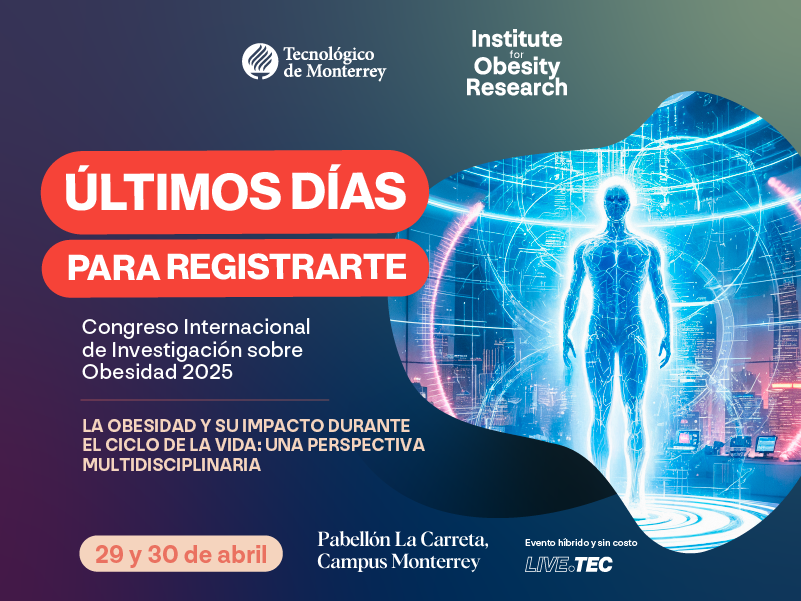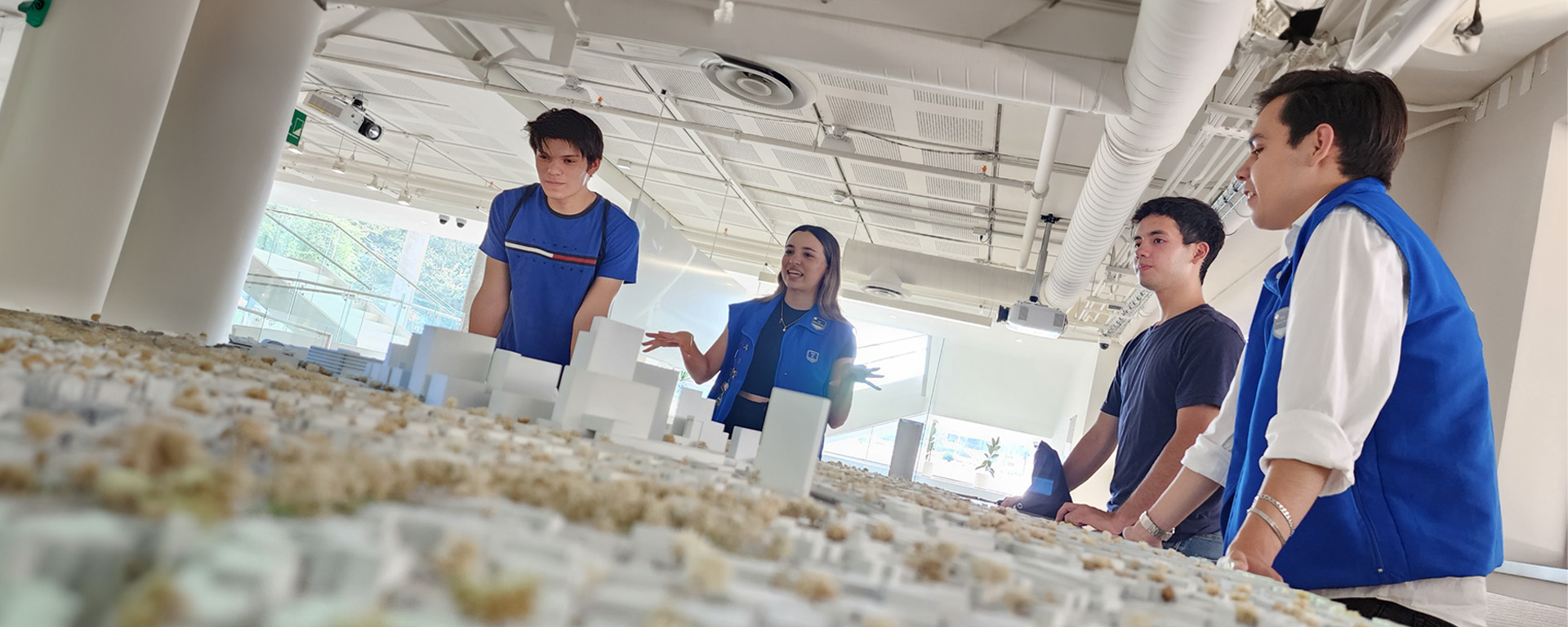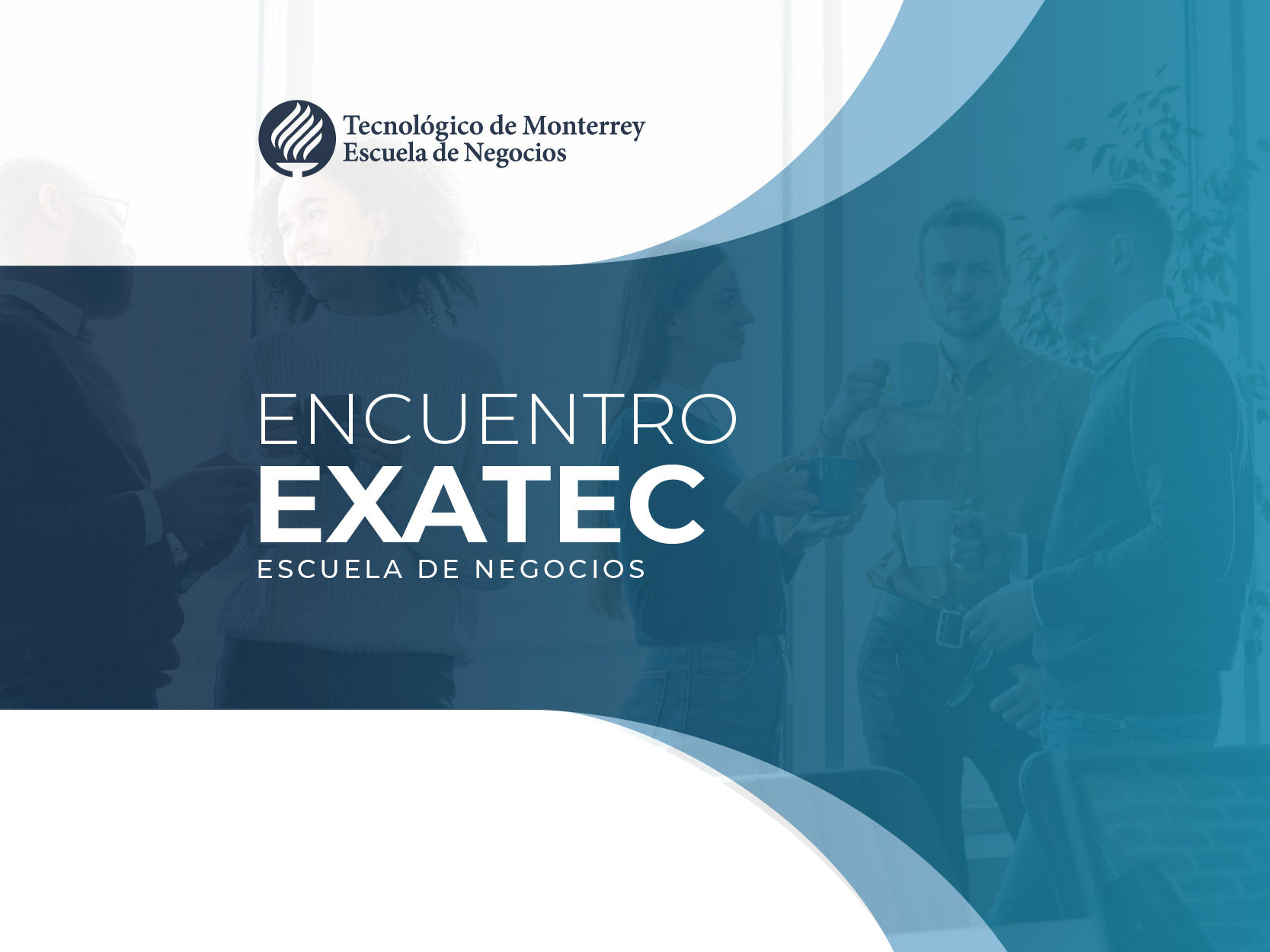Identidad y domicilio del Responsable
El Responsable del tratamiento de los datos personales que usted proporcione, es el Instituto Tecnológico y de Estudios Superiores de Monterrey (en lo sucesivo "ITESM") con domicilio ubicado en Av. Eugenio Garza Sada Sur No. 2501, colonia Tecnológico en Monterrey, Nuevo León, México. C.P. 64700.
Datos personales tratados por el ITESM
Para cumplir con las finalidades del tratamiento de datos personales de usuarios, señaladas en el presente Aviso de Privacidad, es necesario que el ITESM trate las siguientes categorías de datos personales:
- Datos de identificación (incluyendo su imagen personal)
- Datos de contacto
- Datos demográficos
- Datos académicos
- Datos de autenticación
- Datos Laborales
Así mismo, le informamos que, para cumplir con las finalidades señaladas en el presente Aviso, ITESM no recabará ni tratará datos personales sensibles.
Finalidades primarias
El ITESM dará tratamiento a sus datos personales para las siguientes finalidades primarias indispensables y necesarias para la relación jurídica existente entre el titular y el responsable:
- Identificarlo como usuario para pre-registro, registro y acceso a Talent Tank.
- Para gestionar la(s) solicitud(es) que usted realice en relación con el Talent Tank e Iniciativa de Plataformas.
- Para validar la veracidad y calidad de la información proporcionada por usted o aquella que pueda inferirse de usted u obtenerse de otras fuentes lícitas a las que el ITESM pueda tener acceso, incluyendo la verificación de sus datos ante instancias gubernamentales o terceros con los que tengamos celebrados acuerdos de colaboración.
- Realizar actividades de análisis de la información y datos relacionados con su persona mediante la aplicación de diversas técnicas y tecnologías de análisis de datos que nos permitirán conocer mejor su perfil, aptitudes e intereses.
- Utilizarlos para entrenar modelos de inteligencia artificial con el objetivo de mejorar la experiencia del usuario.
- Para invitarle y en su caso, gestionar su acceso y participación en la(s) actividad(es) y eventos relacionados a la Iniciativa de Plataformas.
- De ser procedente, para otorgarle apoyos de diferente índole incluyendo los económicos, becas y/o préstamos en caso de cumplir con los requisitos establecidos en el Talent Tank e Iniciativa de Plataformas.
- En caso de aplicar, para inscribirle y participar en programas de vinculación con instituciones académicas, de investigación gubernamentales y/o privadas en México y en el extranjero.
- Para dar cumplimiento y seguimiento a las bases, requisitos y procedimientos para el registro, admisión y desarrollo en el Talent Tank e Iniciativa de Plataformas.
- Para inscribirle a eventos y/o actividades afines a la Iniciativa de Plataformas en las que participe representando al ITESM.
- Para atender, registrar y dar seguimiento a las quejas que en su caso realice.
- Para utilizar su imagen personal (ya sea en formato de fotografía, video, o cualquier otro medio similar) para hacer publicaciones internas y externas sobre su participación en eventos o actividades, así como para promocionar al ITESM.
- Enviarle comunicaciones, notificaciones y avisos personales a través de distintos canales y mecanismos tecnológicos de comunicación que el ITESM considere pertinentes a fin de darle a conocer información relevante sobre el estado de su proceso de registro o cualquier asunto que resulte de su interés; así como para conocer su opinión respecto a la atención recibida y los servicios que ofrecemos.
- Los datos de perfil y de contacto que proporcione a la plataforma, serán visibles a otros usuarios de la plataforma.
- Para realizar estadísticas y reportes para control interno.
- Para cumplir con las obligaciones previstas en la normatividad aplicable y con los términos y condiciones de cada convocatoria.
- Para dar cumplimiento y seguimiento a los términos y condiciones, lineamientos o reglamentación aplicable al servicio que recibe o actividad en la que participa.
- Para dar cumplimiento y seguimiento a los procedimientos y actividades institucionales previstos en guías, procedimientos, reglamentos, normas, códigos o políticas de carácter interno que resulten aplicables.
Finalidades secundarias
De manera adicional, el ITESM utilizará su información personal para las siguientes finalidades que no son necesarias para el servicio que nos solicita, pero que nos permiten y facilitan brindarle una mejor atención:
- Para contactos posteriores.
- Para enviarle información que consideramos podría ser de su interés y que pudiera estar relacionada con los productos y servicios que ofrecemos.
- Para enviarle invitaciones a eventos, actividades, programas y proyectos.
- Realizar actividades de análisis de la información y datos relacionados con su participación en Iniciativa de Plataformas mediante la aplicación de diversas técnicas y tecnologías de análisis de datos que nos permitirán conocer mejor su desempeño y datos sociodemográficos de su participación.
- Procesos de disociación de sus datos personales para darles tratamiento de forma anónima.
- Para enviarle publicidad y comunicaciones con fines de mercadotecnia o tele-marketing o compañas financieras.
En caso de que no desee que sus datos personales sean tratados para alguna o todas las finalidades adicionales, desde este momento usted nos puede comunicar lo anterior al correo datospersonales@itesm.mx, indicándonos en el cuerpo del correo su nombre completo, su relación con el instituto y que no desea que sus datos sean tratados para alguna o todas las finalidades secundarias.
La negativa para el uso de sus datos personales para fines adicionales, no podrá ser un motivo para negarle los servicios solicitados o dar por terminada la relación establecida con nosotros.
Transferencias
Con base en lo establecido en el artículo 37 de la LFPDPPP, el ITESM podrá transferir sus datos personales sin requerir de su consentimiento en los siguientes supuestos:
- A sociedades controladoras, subsidiarias o afiliadas bajo el control común del responsable (ITESM), o a una sociedad matriz o cualquier sociedad del mismo grupo del responsable que opere bajo los mismos procesos y políticas internas.
- Autoridades competentes en los casos previstos por la normatividad aplicable, en el caso que recibiéramos un requerimiento de obligado cumplimiento.
- Cuando sea precisa para el mantenimiento o cumplimiento de la relación jurídica entre Usted y el ITESM, como lo es el caso de Personas físicas o morales, nacionales o internacionales con las que tengamos celebrados acuerdos jurídicos vinculantes.
Derechos ARCO y/o revocación del consentimiento
Usted o su representante legal podrá ejercer cualquiera de los derechos de acceso, rectificación, cancelación u oposición (en lo sucesivo “derechos arco”), así como revocar su consentimiento para el tratamiento de sus datos personales a través del correo electrónico datospersonales@itesm.mx y siguiendo el procedimiento, requisitos y plazos para el ejercicio de sus derechos ARCO y/o revocación del consentimiento de nuestra página de internet: https://tec.mx/es/derechos-arco-yo-revocacion-del-consentimiento.
Limitación y/o divulgación de sus Datos Personales
Usted podrá limitar el uso o divulgación de sus datos personales en los eventos o actividades que se lleven a cabo a través de herramientas y plataformas digitales, no activando la cámara, no utilizando su imagen personal en la cuenta con la que se conecte y/o no registrándose con su perfil (dependerá de la plataforma que se utilice para llevar a cabo el evento o actividad).
En las comunicaciones por correo electrónico, inscribiéndose en el listado de exclusión (unsubscribe list), cuando esté disponible en la propia comunicación.
Usted también podrá limitar el uso o divulgación de sus datos personales enviando su solicitud a el ITESM a través de un correo electrónico dirigido a la dirección datospersonales@itesm.mx.
Los requisitos para acreditar su identidad, así como el procedimiento para atender su solicitud se regirán por los mismos criterios señalados en nuestra página de internet: https://tec.mx/es/derechos-arco-yo-revocacion-del-consentimiento. En caso de que resulte procedente, se le registrará en el listado de exclusión propio del ITESM.
Uso de Cookies
El ITESM utiliza varias tecnologías para mejorar la eficiencia de la Plataforma incluyendo su experiencia cuando navega por el sitio. Las cookies son pequeñas cantidades de información que se almacenan en el navegador utilizado por cada usuario para que el servidor recuerde cierta información que posteriormente pueda utilizar. Esta información permite identificarle y guardar sus preferencias personales para brindarle una mejor experiencia de navegación.
Le recordamos que usted puede desactivar, deshabilitar o ajustar el uso de cookies y otras tecnologías siguiendo los procedimientos del navegador de internet que utiliza.
Seleccione la opción de “configuración” o herramientas de acuerdo con su explorador.
Seleccione la opción desactivar cookies. Este proceso no solo deshabilitará las cookies de nuestra Plataforma, sino las de todo su navegador.
Los datos personales que se pueden obtener a través del uso de estas tecnologías son los siguientes: Identificadores, nombre de usuario y contraseñas de una sesión; región en la que se encuentra; tipo de navegador; tipo de sistema operativo; fecha y hora del inicio y final de una sesión; páginas web visitadas; búsquedas realizadas y publicidad revisada. Estas tecnologías podrán deshabilitarse siguiendo los procedimientos del navegador de internet que utiliza.
Departamento de Datos Personales del ITESM
Es importante hacer de su conocimiento que el ITESM cuenta con un Departamento de Datos Personales el cual, como parte de sus funciones, tiene la de resolver cualquier duda que usted pudiere tener relacionada con el uso de su información. Asimismo, el Departamento de Datos Personales dará seguimiento a cualquier queja o reclamación que usted pudiere tener relacionada con el tratamiento de su información personal.
Usted puede contactar al Departamento de Datos Personales del ITESM enviando un correo electrónico a la siguiente dirección electrónica: datospersonales@itesm.mx.
INAI
En caso de considerarlo necesario, le informamos que tiene el derecho de acudir ante el Instituto Nacional de Transparencia Acceso a la Información y Protección de Datos Personales (INAI) para hacer valer cualquier inconformidad relacionada con el tratamiento de sus datos personales por parte del ITESM.
Cambios al Aviso de Privacidad
El ITESM le notificará de cualquier cambio a su aviso de privacidad a través de https://tec.mx/es/aviso-privacidad-talent-tank.
Última actualización: abril 2024



































